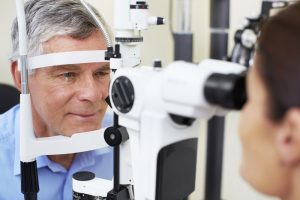
Over the years there have been various campaigns to toughen up road safety standards. Like so many campaigns, however, things tend to be cyclical and come around several times before anything is done.
Here are a handful of examples that immediately spring to mind to prove my point:
Single/Double British Summertime (SDST)
Campaigners say that one of the consequences of the UK’s current time system is that more people are killed and injured on the road because of darker evenings in the autumn and winter than there would be if we used SDST.
This would see the country adopting GMT+1during the winter months and GMT+2 being applied to the summer period. There is no sign of this being introduced anytime soon.
No Mobile Phones in cars
Using a hand-held mobile phone while driving or instructing is illegal but using a mobile phone ‘hands-free’ is not.
Mobile phones were first presented to the public in 1973 and went on sale widely in 1983to those with the forearm strength to lift them.
Few connected their impact to road safety and driving for many years, and it took 20 years of campaigning before the use of hand-held phones was banned while driving or instructing. The fines have been increased over the years and in 2017, the penalty was increased to six points and a £200 fine.
However, stamping out the potential driver distraction of all texts, emails and calls by completely banning the use of mobile devices in cars is still on the list of things some campaigners would like to see to see happen.
Learner drivers on Motorways
I’m not sure when the campaign to allow learners on motorways first started; perhaps it was just after the Preston Bypass (later part of the M6) opened in 1958.
Certainly, by the 1980s there were concerted calls from driver trainers and other road safety campaigners to allow learners on to motorways. As we all know, this year, 60 years after motorways first came into use, the network was opened to learner drivers in dual controlled cars supervised by an ADI. So now learners have access to all the British road network – except, of course, to parts of the A55 in north Wales!
Compulsory Seatbelts
The campaign for compulsory seatbelts was along one and began back in 1959 when Nils Bohlin, an engineer at Volvo, invented the three-point seat belt.
In 1973 a clause in a Road Traffic Bill concerning seat belt use was introduced but never made it onto the statute book. That started to be put right in 1983 when the law on seat belt wearing for front seat users came into force. In 1989 regulations came into effect for mandatory rear seatbelt wearing by children and in 1991, wearing a seat belt in the back of a car became compulsory for all passengers.
Improved visual acuity for drivers
As most readers will know drivers must be able to read (with glasses or contact lenses, if necessary) a car number plate made after 1September 2001 from a distance of 20 metres– or 26.5 metres for Discover the years there have been many calls for the regulations to be tightened, both on the standards demanded and the frequency of testing.
This is one of those subjects that does get debated on a regular basis. I can remember when Lynda Chalker was Minister of Transport and spoke at an MSA GB National Conference about the call at the time for stricter eyesight tests. She pointed out that she felt the problem was not that people can’t see properly, it is that they just don’t look!
There is gathering momentum behind this policy, however, with a new petition on gov.uk calling for: ‘Statutory periodic vision screening for all drivers during their driving life. ‘It goes on to state: ‘The UK regulations are among the weakest in Europe, relying on self-regulation and reporting. Road safety should start with good vision and current procedures lack any medical rigour to substantiate visual fitness to drive, increasing the potential for injury or death due to accidents [sic].’
A visit to the petition supporter’s websitewww.drivingblind.org.uk shows that supporters include the Association of British Dispensing Opticians; Ellis & Killpartrick, optometrists and contact lens practitioners, and Essilor, which is, according to its website, the leading manufacturer and wholesale distributor of optical lenses in the United Kingdom.
I’m not inclined to support this petition unless, of course, the idea is that people make an appointment with their local ADI, perhaps once every five years, and a check is made that they can read a number plate at 20 metres.
Perhaps I can sell you a 20-metre tape?

Be First to Comment